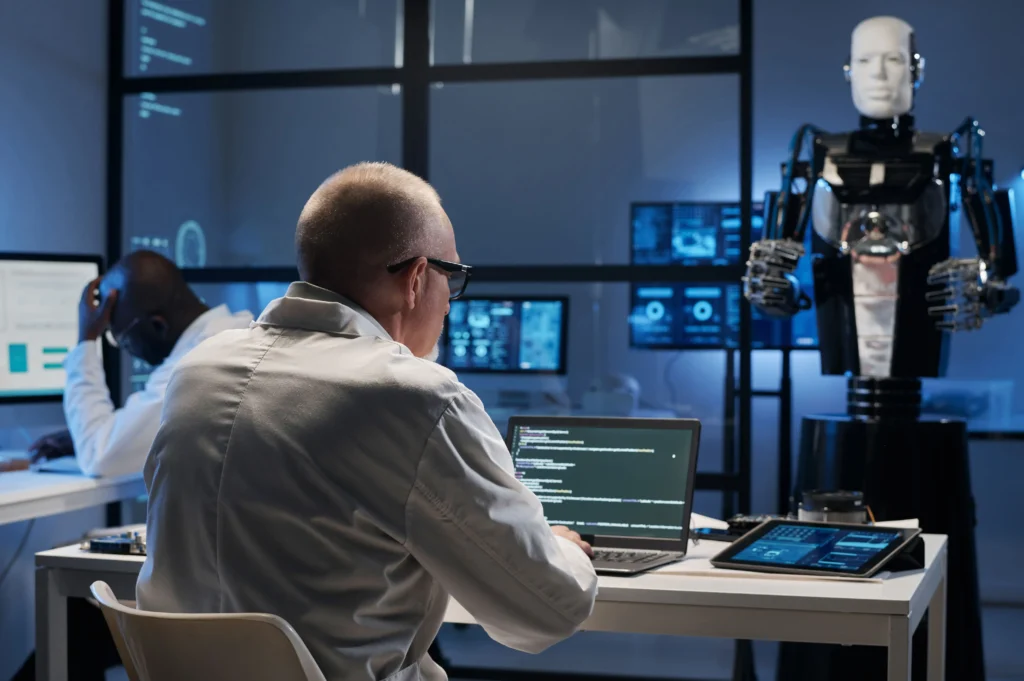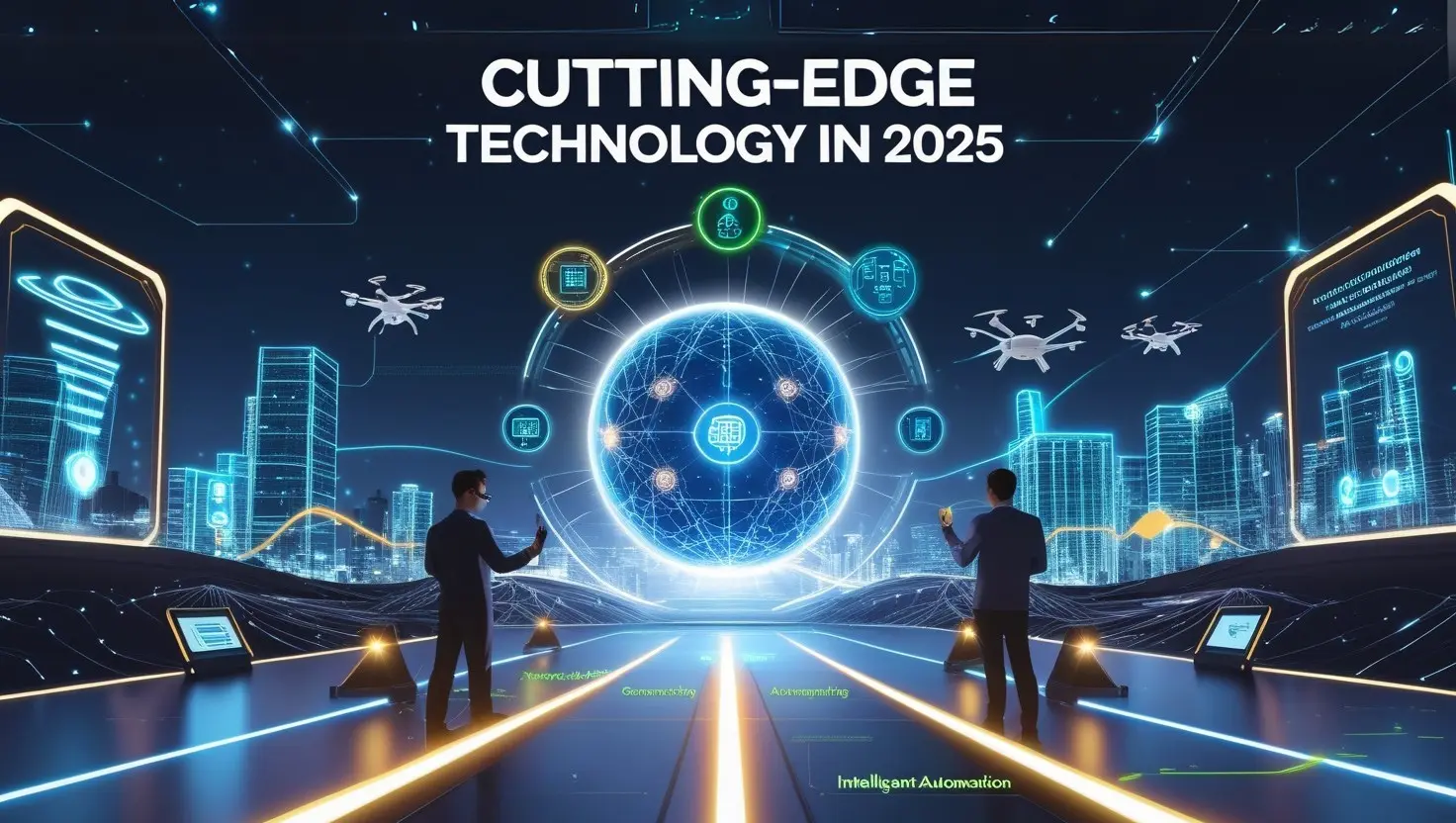In 2025, cutting-edge technology continues to redefine industries, driving innovation and enhancing lives globally. Emerging technologies such as quantum computing, automation and other sustainable technologies seem to address future problems in a creative manner. Here we examine how the Cutting-edge technology has the capability to transform the world alongside its real life applications whilst aiming to eradicate complex issues in intelligent automation.
What Is Cutting-Edge Technology?
A cutting-edge technology represents the pinnacle of innovation, pushing the boundaries of current knowledge with the latest features and capabilities.. Often synonymous with leading-edge or state-of-the-art technology, these innovations pave the way for breakthroughs across industries.
As an example, 5G networks have revolutionized connectivity, enabling faster data transmission and creating opportunities for technologies such as autonomous vehicles and IoT devices.
Why Is Cutting-Edge Technology Important?
Problem Solving:
A series of intricate problems is solved through AI analyzing large data sets to provide personalized medicine or blockchain being deployed in supply chain optimization, among many others.
Intelligent Automation:
Automating menial and repetitive tasks is being carried out by the AI driven chatbots and robotics thereby increasing productivity and efficiency.
Economic Growth:
The construction of new markets, better operational work and economic growth all ensure that businesses remain competitive.
Improved Quality of Life:
Technologies such as telemedicine and health monitors enable better access to healthcare and allow people to manage their health.
Examining Cutting Edge Technology In Action
1. Artificial Intelligence (AI)
AI remains in the lead for the year 2025. Large language models such as ChatGPT advocate the need of text, voice, or video inputs, hence redefining the way conversation is conducted.
Use Case:
The development of many sectors includes AI into the picture that licenses proficient automation. For example, AI algorithms help developers test code, locate bugs, and even produce coded snippets, reducing the time restraints of completing software development.
2. Quantum Computing
Quantum computers are in their early stages yet their wide range of capabilities is profound in solving problems previously deemed exceedingly difficult. Leveraging the use of qubits, these kinds of machines manage data with a 10 exponential difference with the traditional computers.
Use Case:
Quantum computing is used in the biopharmaceutical industry for simulating molecular structures during the drug discovery process.
3. 5G Expansion
The introduction of new technologies and the expansion of networks motivates the growth of new devices based on the Internet of Things, while its communication advances with the use of new 5G networks.
Use Case:
Every autonomous vehicle is equipped with a 5G network that operates in real time simulation to make driving easier and safer.
4. Biotechnology in Agriculture
Food insecurity is one of the pressing issues facing the world today, which is why agricultural biotechnology is working in engineering suitable transgenic crop plants with adequate pest resistance and environmental stress tolerance.
Use Case:
The technology cuts the dependence on chemical spraying, and at the same time, increases the production of crops with the help of the gene editing hand CRISPR.
5. Blockchain Technology
The incorporation of Cryptocurrency in a business ensures the inviolability and visibility of many aspects, and this spans diverse industries including finance and supply chains.
Use Case:
The technology helps in the detection of fraudulent activities and assures transparency in the supply chain resulting in elevated trust between the parties involved.

Top 25 Emerging Technologies in 2025
The following are some of the innovative technologies that are transforming businesses as we speak.
- Generative AI: Automates creative processes such as copying, enhancing and other types of content creation.
- Quantum Computing: Provides extreme level computation in data analysis.
- 5G Expansion: Enables seamless communication and internet integration.
- VR 2.0: Precisely amplifies experiences in training and gaming.
- AR: Compounds the virtual information with the actual environment
- IoT: Links between devices to enhance the operations.
- Biotechnology in Agriculture: Increases the farm outputs while enhancing sustainability.
- Autonomous Vehicles: Decreases the chances of declaring an accident as a claim while boosting mobility.
- Blockchain: Maintains hierarchical data security while encouraging data decentralization.
- Edge Computing: Allows data to be processed geographically close to the computing devices which helps speed up processes.
- Personalized Medicine: Revisions traditional medicine treatment with respect to patients genetic unique makeup.
- Neuromorphic Computing: Advanced artificial intelligence which is powered by artificial charisma that imitates the human brain.
- Green Energy Technologies: Advances the cause of the use of alternate energy sources.
- Wearable Health Monitors: Checks vital signs regularly for preventative purposes.
- XR for Training: Enables training through immersing people in realistic environments where they practice particular skills.
- Voice Technology: Makes interaction easier and more straightford.
- Space Tourism: Aims to make intercontinental travel using spacecraft into a business activity.
- Synthetic Media: Aids in a person’s life by producing a virtual version of them for fun and as well as for communication purposes.
- Advanced Robotics: These are complex tasks that require a system to be fully automated in manufacturing, healthcare and other industries.
- AI in Cybersecurity: Links between different cells of defense and attacks that are threatening are established.
- Digital Twins: The use of portioning physical parts with cyber assets which are information driven or made is enabled.
- Sustainable Technology: Provides new and revolutionary ways to deal with the urgent challenge of climate change.
- Telemedicine: Makes it so that a person can talk to a doctor without having to physically go to their office.
- Nanotechnology: The concept focuses on the creation of devices and systems which are more diverse in their functions.
- AI TRiSM: Offers people a guarantee that there are trust, reliability and security in any AI system.
The Pros and Cons of Cutting-Edge Technology
Positive Aspects
Greater Productivity:
Automation of intelligent tasks helps in speeding up the processes within a business to save on human time.
Accessible New Functions and Features:
New features appear on a quite regular basis which facilitates access to new solutions and tools.
Access to New Markets:
From a competitive standpoint, any company that first adopts any new technology gains a considerable market edge.
Problem-Solving Potential:
Technologies like AI and IoT address global challenges efficiently.
Negative Aspects
High Costs:
The initial costs of attempting to use them can be considerably high such as the costs of integration and purchase.
Stability Issues:
All new technologies are new and thus unreliable at their dawn.
Skill Gaps:
Without the professionals, many new fields may not develop to their fullest as they should or could.
Cybersecurity Risks:
The use of Technology tends to introduce some vulnerabilities which must be dealt with.
Current Trends of Cybersecurity in Relation to the Cutting-Edge Technology
The current pace of technology adoption is bound to cause the requirements of technology to grow and therefore the pace to increase, necessitating the expansion of cybersecurity. Case In Point:
IoT Security:
Updating firmware should reduce the risk of the device being hacked or exploited.
Generative AI:
Currently aiding sophistication cyber attacks such as AI generated phishing emails, while at the same time boosting productivity.
The Future of Cutting-Edge Technology
The perspective for 2025 indicates that greatest improvements will be observed in AI and innovation that is sustainable. One of the greatest developments could be Artificial General Intelligence (AGI) which guarantees more automation than will be ethically or socially acceptable.
How Businesses Can Stay On The Cutting Edge
For businesses to scale, they need to:
Allocate Funds to Research:
regular research equates to being on top or in line with the technology market.
Encourage New Directions:
Promote innovative growth through increasing the level of or promoting practical skills.
Utilize Professional Resources:
Expertise on various technologies that are fast becoming mainstream.
Conclusion:
Top end technology of 2025 is a prime mover of growth being the enabler of intelligent automation, problem-solving and economic expansion. Industries should adopt the new solutions to meet the global needs and improve living standards so that there would be hope for every one in the world. Use of AI, blockchain, to mention just a few are going to bring new ways of doing things that up to now have not been considered.

